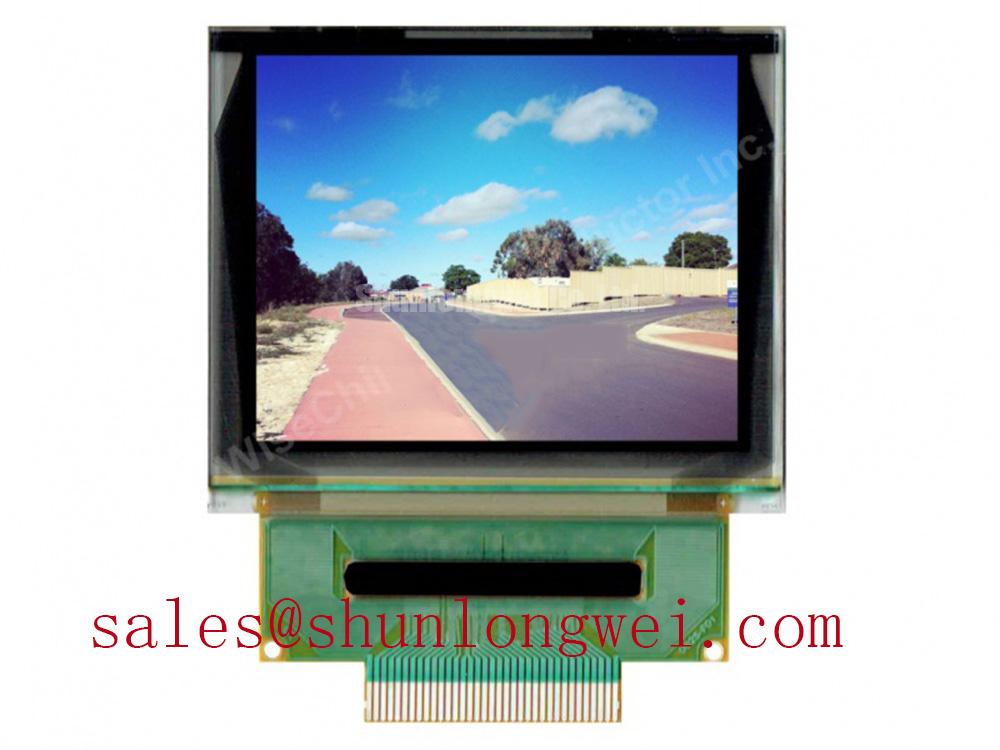Content last revised on November 12, 2025
URT UG-6028GDEBF02 | High-Brightness 2.8-inch Display for Demanding Industrial Environments
The URT UG-6028GDEBF02 is a 2.8-inch TFT-LCD engineered from the ground up for applications where standard consumer displays fail. It addresses the critical challenges of visibility in high ambient light and operational integrity in extreme temperatures, providing a reliable and clear Human-Machine Interface (HMI) solution for the most demanding industrial sectors.
- Exceptional Readability: High-brightness backlight ensures crisp, clear visuals even in challenging lighting conditions, including indirect sunlight.
- Industrial-Grade Resilience: An ultra-wide operating temperature range guarantees stable performance in unconditioned environments, from frozen tarmacs to sun-baked vehicle cabins.
- Seamless Integration: Features a versatile parallel MCU interface, simplifying connection to a wide array of industrial microcontrollers and embedded systems.
- Engineered for Longevity: Built with robust components designed to withstand the rigors of constant operation, vibration, and thermal cycling typical in industrial equipment.
Key Technical Specifications
The following table provides an at-a-glance overview of the UG-6028GDEBF02's core performance metrics. For a detailed specification sheet of a comparable model in this series, you can download the URT UG-6028GDEFF01 datasheet.
| Parameter | Value |
|---|---|
| Display Technology | a-Si TFT Active Matrix, Normally White |
| Screen Size | 2.8 inch (diagonal) |
| Resolution | 240 x 320 pixels (QVGA) |
| Luminance (Brightness) | 850 cd/m² (typ.) |
| Contrast Ratio | 500:1 (typ.) |
| Interface | 8/16-bit Parallel MCU Interface |
| Operating Temperature Range | -30°C to +85°C |
| Storage Temperature Range | -40°C to +90°C |
Technical Deep Dive: Engineering for Real-World Extremes
Two core engineering decisions elevate the UG-6028GDEBF02 beyond a standard display. Understanding these is key to appreciating its value in your design.
1. High-Flux LED Backlight System: Achieving 850-nit brightness in a compact 2.8-inch form factor is a significant thermal and optical challenge. This is accomplished not just by using more LEDs, but by employing high-efficiency LEDs coupled with an advanced light guide plate (LGP). This design maximizes luminance uniformity across the screen while minimizing power consumption and heat generation—a critical factor for long-term reliability. For system designers, this translates directly into a truly sunlight-readable HMI that won't compromise the thermal budget of your device.
2. Advanced Liquid Crystal Formulation: The -30°C to +85°C operating range is a testament to the material science at its core. Standard liquid crystal fluid can become overly viscous at low temperatures, drastically slowing pixel response time and causing "ghosting." At high temperatures, it risks phase transition, leading to permanent dark spots. The UG-6028GDEBF02 utilizes a specialized liquid crystal mixture and robust sealants that maintain fluid stability and predictable electro-optical properties across this entire temperature spectrum. This is fundamental for equipment deployed in environments without climate control, ensuring functionality on startup, whether in a cold storage facility or an agricultural vehicle.
Application Scenarios & Value Proposition
The unique features of the UG-6028GDEBF02 make it the ideal choice for specific, challenging applications:
- Heavy Machinery & Agricultural Vehicles: In the cabins of excavators, tractors, or mining trucks, the display must endure extreme temperatures, shock, and vibration while remaining perfectly readable in the midday sun.
- Outdoor Kiosks & EV Charging Stations: Delivers a clear user interface that is impervious to weather swings, providing reliable operation and excellent readability for public-facing transactional systems.
- Marine Electronics: For GPS plotters, fishfinders, and engine monitoring systems, the combination of high brightness and a wide Viewing Angle ensures critical data is visible to the operator from multiple positions on deck.
- Portable Industrial Handhelds: Offers a rugged and reliable display for diagnostic tools, inventory scanners, and field service equipment that moves between indoor and outdoor environments.
Engineer's FAQ
How can I manage the power consumption of the high-brightness backlight in a battery-powered design?
The backlight is the primary power draw. The LED driver circuit is designed to be controlled via a Pulse-Width Modulation (PWM) signal. This gives you direct, granular control over brightness. By integrating an ambient light sensor into your HMI design, you can create a closed-loop system that automatically adjusts the backlight to the minimum required brightness, significantly extending battery life without sacrificing readability.
What are the primary challenges when integrating an MCU parallel interface?
The main challenge is signal integrity and timing. With a parallel bus, it's critical to keep trace lengths relatively equal to avoid data skew. Most importantly, your microcontroller's GPIO speed must be able to meet the display controller's setup and hold time requirements as specified in the datasheet. Using DMA (Direct Memory Access) on your microcontroller is highly recommended to transfer frame data, as this offloads the CPU and prevents the UI from becoming sluggish. If you need assistance with interface design or driver development, please contact our technical team for expert support.






